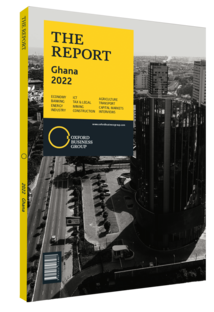Ramesh Sadhwani, Co-CEO, Melcom: Interview

Interview: Ramesh Sadhwani
To what extent has the global supply chain disruption impacted retailers in Ghana, and how is the industry adapting to this?
RAMESH SADHWANI: Like everywhere else in the world, supply chain disruptions have been challenging. We have all been affected by them, although some more than others. Thanks to planning ahead over several months, Melcom has been affected to a lesser extent. For example, we booked space with shipping companies in advance and committed to moving a certain volume each month.
Pricing was the first aspect to be affected due to global disruptions, and then the availability of containers became an issue. Yet even after securing containers, the availability of space on vessels has been another issue. This has all had a dramatic effect and increased costs. The freight cost is more than the actual cost of the merchandise for certain imported goods, without taking into account the approximately 50% import duty and tax rate. As a result, we have had to increase prices and drop a few lines of merchandise.
Beyond all that, tax changes are anticipated in Ghana, which will take prices up by another 10-25% depending on what is actually implemented. This was still being reviewed in early 2022. I expect price rises of anywhere between 10% and 30% in the months to mid-2022. This does not take into account currency fluctuations, of which we saw about a 10% decrease in late 2021 and early 2022. Taking everything together, I believe consumers will be surprised at the level of impact on prices despite efforts by businesses to squeeze margins.
How is the expansion of e-commerce shaping the Ghanaian retail industry?
SADHWANI: E-commerce has been growing steadily and I anticipate that it will continue to expand. However, once again, the issue is securing supply. Although an e-commerce site may be active, the question is if a company is getting goods from the vendor that people want. Very often an e-commerce platform does not stock the goods itself, but relies on vendors to supply them.
It is also common for e-commerce sites to not update their offerings on a daily basis. This means that by the time a consumer places an order for a product that was listed on the site a month ago, it is possible that either the vendor is out of stock or the price has changed. In those cases, fulfilment from the platform to the consumer does not always happen. I believe this is the biggest issue that most e-commerce platforms are facing. Only a few retailers have their own platforms and stock on hand, and are therefore in a position to regularly update their site and achieve a relatively high fulfilment rate.
Which segments are set to drive retail growth in 2022, given the trends in consumer spending?
SADHWANI: I believe that retail growth will be driven by fast-moving consumer goods and food commodities over the course of the year, as they are daily necessities for consumers. There is a conscious choice of people switching to modern trading mechanisms and away from traditional markets and open-air venues. We see a lot of that shift happening not necessarily at the pace that we thought it would occur. Another shift is taking place by those consumers who already patronise organised trade channels. These customers are moving to e-commerce platforms, which I noted is a growing segment. These shifts are truly visible and growth is occurring in multiple areas of the retail sector.
It is important to note is that there has not yet been much debate or communication in the public arena for people to understand the consequences of supply chain disruption and currency devaluation, and what that may mean for them going forwards.
You have reached the limit of premium articles you can view for free.
Choose from the options below to purchase print or digital editions of our Reports. You can also purchase a website subscription giving you unlimited access to all of our Reports online for 12 months.
If you have already purchased this Report or have a website subscription, please login to continue.

